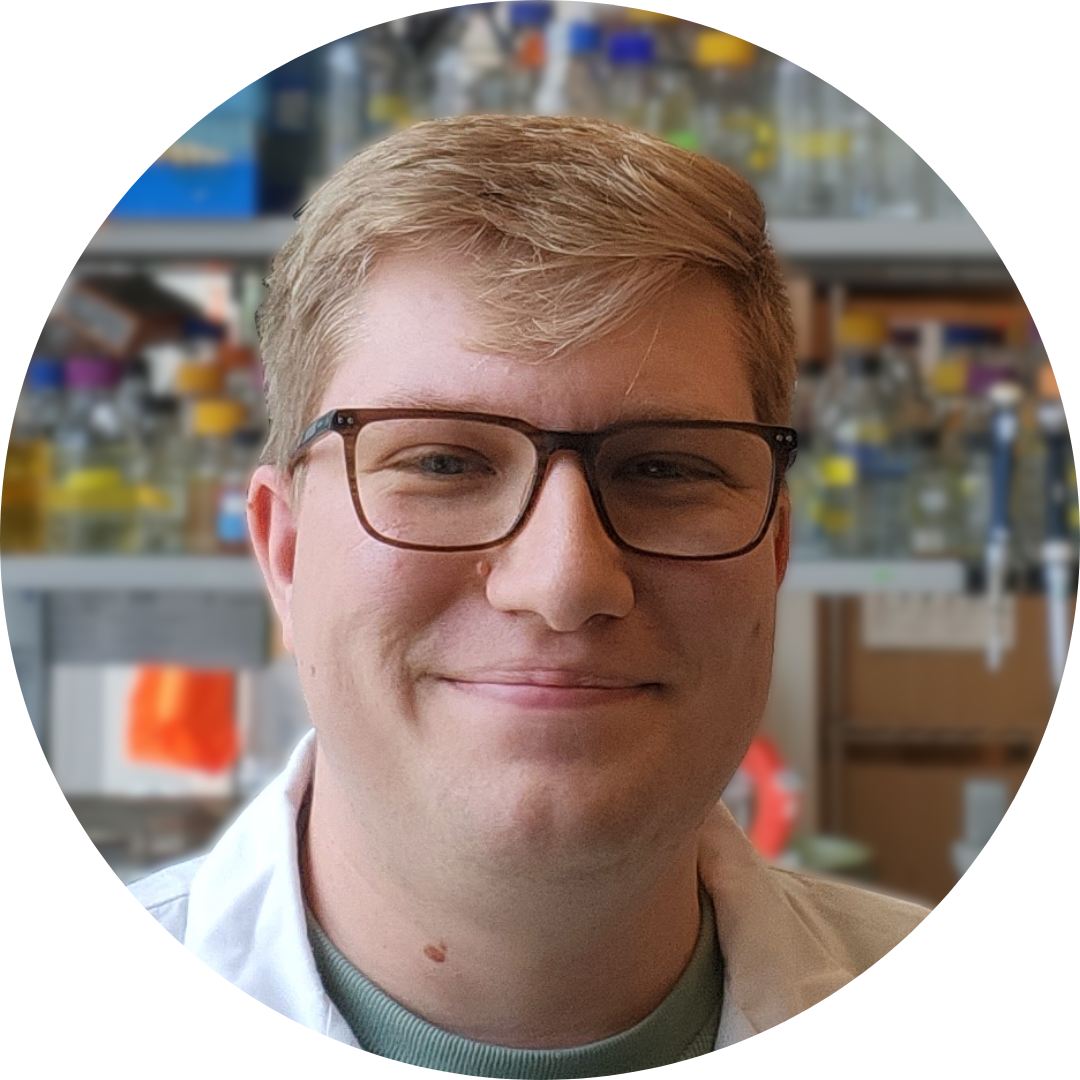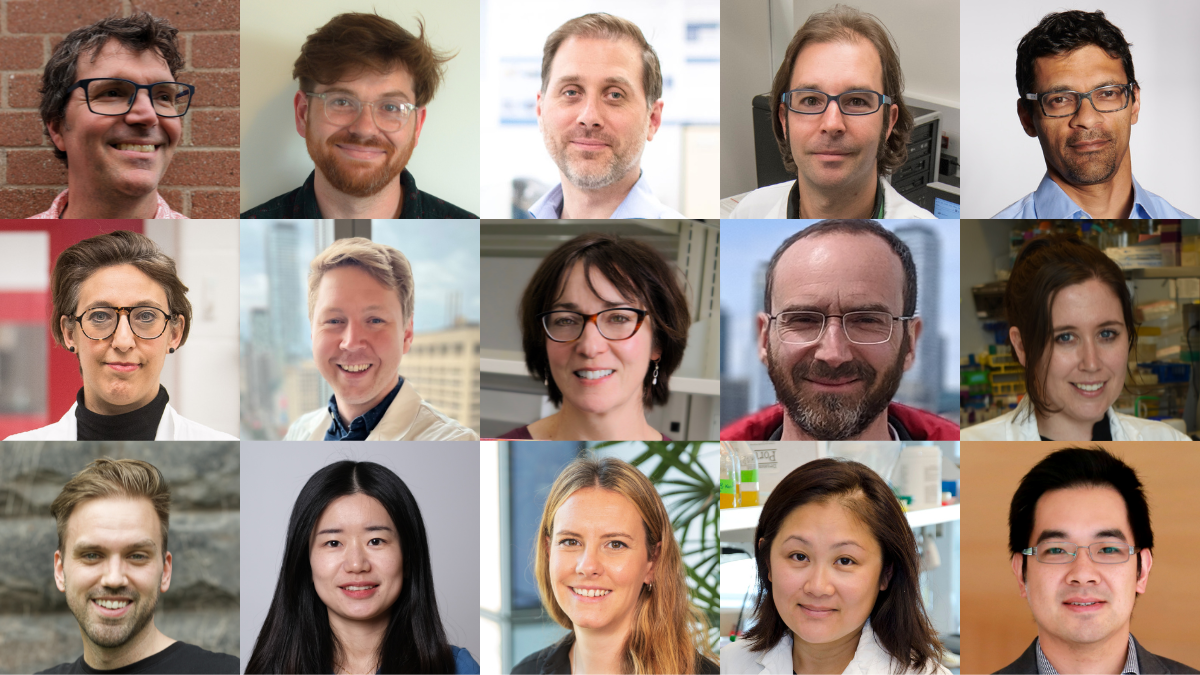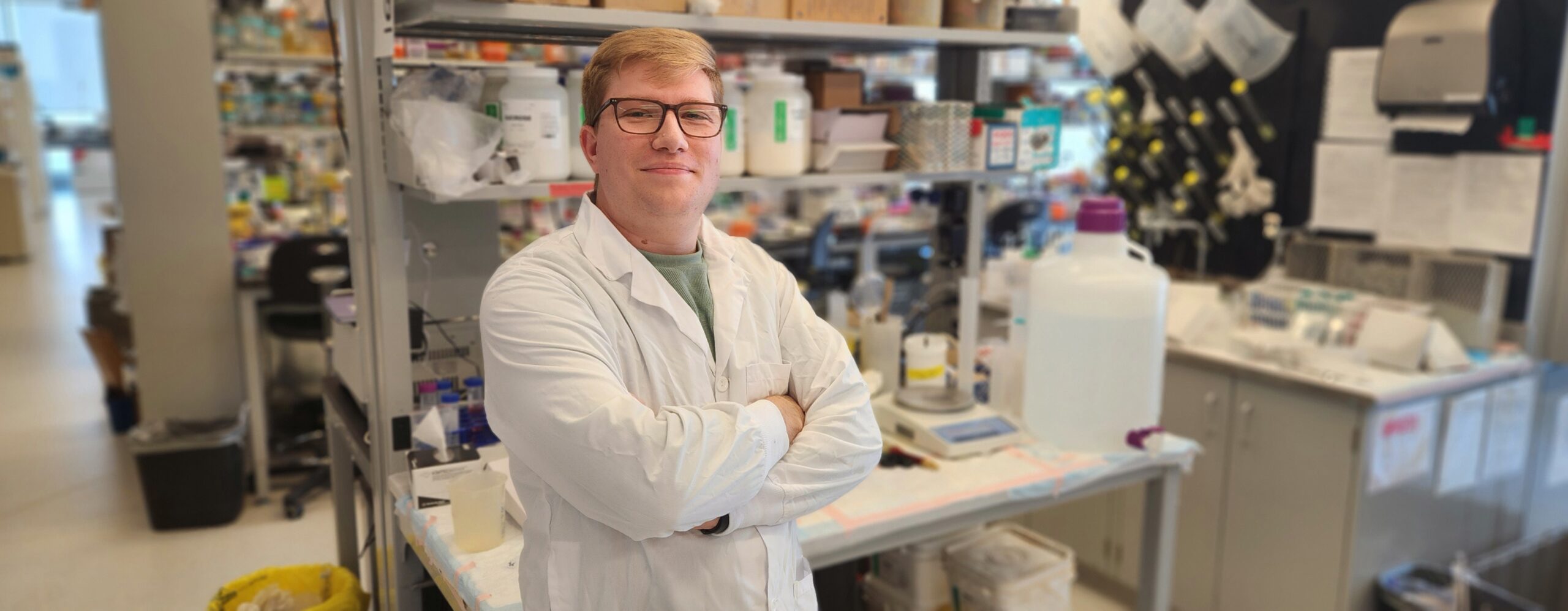Results of the 2023 Convergence Postdoctoral Fellowships Competition
The Emerging and Pandemic Infections Consortium (EPIC) is an integrated network for researchers, trainees and partners working to confront infectious disease challenges. We unite members across the University of Toronto and its hospital partners to accelerate cross-disciplinary work in the understanding and development of new countermeasures against pathogens. A key pillar of EPIC’s work is training the next generation of infectious disease research leaders that will help stop future pandemics and reduce the societal burdens of infectious disease.
EPIC Convergence Postdoctoral Fellowships support postdoctoral trainees who are driving innovative infectious disease-focused projects that bridge two research disciplines. These senior trainees are expected to engage faculty from at least two different departments and/or divisions, with formal co-supervision by each. By linking together expertise from different research areas, EPIC Convergence Postdoctoral Fellowships will help strengthen the connectedness and interdisciplinarity of EPIC’s research community while advancing leading-edge research.
We are pleased to share the results of our inaugural Convergence Postdoctoral Fellowships competition that we launched in March 2023.
Total investment
Meet our 2023 Convergence Postdoctoral Fellowship recipients

Landon J. Getz
Department of Biochemistry, Temerty Faculty of Medicine
Recipient of the GSK EPIC Convergence Postdoctoral Fellowship in Antimicrobial Resistance
Supervisors: Karen Maxwell (University of Toronto, Temerty Faculty of Medicine) and Mikko Taipale (University of Toronto, Temerty Faculty of Medicine)
Project title: Ensuring the success of phage therapy: a systematic exploration of antiphage defense in a pandemic food-borne human pathogen

Edward James
Department of Molecular Genetics, Temerty Faculty of Medicine
Supervisors: Aaron Reinke (University of Toronto, Temerty Faculty of Medicine) and Rodrigo Fernandez-Gonzalez (University of Toronto, Faculty of Applied Science and Engineering)
Project title: Investigating the metabolic relationship between microsporidia and their hosts, via RNAi and automated image analysis

Desmond van den Berg
Institute of Biomedical Engineering, Faculty of Applied Science and Engineering
Supervisors: Ben Hatton (University of Toronto, Faculty of Applied Science and Engineering) and Kevin Katz (University Health Network)
Project title: Modifying medical gloves to reduce microbial transmission

Ying Wang
Institute of Biomedical Engineering, Faculty of Applied Science and Engineering
Supervisors: Milica Radisic (University of Toronto, Faculty of Applied Science and Engineering) and Slava Epelman (University Health Network)
Project title: Developing a human sex-specific model of SARS-CoV-2 induced myocarditis using organs-on-a-chip
Project summaries
Landon Getz: Ensuring the success of phage therapy: a systematic exploration of antiphage defense in a pandemic food-borne human pathogen
Vibrio parahaemolyticus is the leading cause of food poisoning caused by the consumption of contaminated seafood. In recent years, strains of V. parahaemolyticus have become both more infectious and more antibiotic resistant, generating significant concern about our ability to effectively treat infections. Further, there is considerable evidence that infections caused by Vibrio species are increasing in prevalence as sea-surface temperature rises and creates a more favourable environment for bacterial growth. Thus, there is great need to explore novel therapeutic treatments for V. parahaemolyticus.
One promising therapeutic is the use of bacterial viruses, known as phages, to either pre-treat seafood to kill contaminating bacteria, or to treat human infections directly. As antibiotic resistance rates rise, there is increasing interest in using phage therapy, and a number of recent cases have shown great success. However, while V. parahaemolyticus phages can be readily isolated, they remain largely understudied, which presents a barrier to their effective clinical use. In this work, I will isolate and characterize Vibriophages that infect the pandemic strain of V. parahaemolyticus, as well as other related disease-causing strains. I will use a multidisciplinary approach, combining standard microbiological assays with novel high-throughput techniques and advances in automation technologies, to provide new insight into how Vibriophages hijack their host bacteria in order to replicate and kill them, as well as how V. parahaemolyticus protects itself from phage predation. Given the considerable promise of phage therapy, this project will provide critical groundwork for engineering novel phage therapeutics for an important human pathogen.
Edward James: Investigating the metabolic relationship between microsporidia and their hosts, via RNAi and automated image analysis
I am researching how a type of fungal pathogen called microsporidia affects its host organism. Microsporidia can infect a range of animals – including humans – causing disease, but I’ll be studying it in an easy-to-grow type of worm called C. elegans. My project aims to understand the metabolic relationship between microsporidia and its host at the molecular and genetic levels. I will use a combination of techniques including RNA interference (RNAi) and AI-based image analysis to do this. Through RNAi I will individually turn off every metabolic gene in C. elegans infected with microsporidia and use custom computer vision tools to measure; host development, microsporidia infection, and reproduction of both host and pathogen. While C. elegans are suited for large experiments like this, without the AI tools I am developing to quantify microsporidia within their hosts,it is not feasible to study inf ected worms at scale.
By better understanding the relationship between microsporidia and its host, we can identify potential targets for intervention in microsporidia infections, which can be a significant problem in both humans and economically important animal species. My project will also help us understand the conditions that make individuals and populations particularly vulnerable to microsporidia infection.
This project requires a multidisciplinary approach, combining techniques from molecular biology and computer vision. As someone with a background in both fields, I am uniquely qualified to translate between these two research perspectives and advance this project.
Desmond van den Berg: Modifying medical gloves to reduce microbial transmission
During any visit to a hospital, people are at risk of acquiring an infection caused by a wide range of bacteria, fungi, or viruses. In recent years, many microbial infections have become more difficult to treat due to their resistance to standard antibiotics. One recognized pathway of the spread of these infections is through hand contact within a hospital. Even medical gloves still transfer microbes from one surface to another during touch contact with patients, handles, touchscreens, etc. Recently we have made medical gloves having micropatterned surfaces to decrease the rates of ‘pick-up’ and ‘drop-off’ of microbes (bacteria and viruses). In fact, we have shown that there are 100 times fewer bacteria or viruses on their surface with each finger contact, compared to regular gloves, which should mean there are fewer microbes transferred around a hospital. In this project we plan to test these glove prototypes within a Toronto hospital setting, to measure microbial transfer for several touch surfaces. We will be assisted in this endeavour by our collaborator, Dr. Kevin Katz, who is the medical director of Infection Prevention and Control at North York General Hospital. This work will allow us to bridge our work with material surface engineering and microbiology with expertise in infectious disease transmission in clinical environments. Through this collaboration, we hope to test and seriously reduce the transmission of dangerous microbes in a real-world hospital setting
Ying Wang: Developing a human sex-specific model of SARS-CoV-2 induced myocarditis using organs-on-a-chip
The occurrence of myocarditis among COVID-19 patients motivates the development of new models. Myocarditis is an inflammation of the heart muscle, which affects cardiac electromechanical properties and causes abnormal heart rhythms. The relatively low incidence in the past and difficulties in establishing diagnosis have limited the conduct of large-scale, randomized clinical trials to evaluate treatment strategies. Males are reported to be at a greater risk than females in developing SARS-CoV-2 induced acute myocarditis. In this proposed study, we aim to fill in this gap by developing a human SARS-CoV-2-induced myocarditis-on-a-chip model that enables the systemic understanding of sex-specific contributions to the disease phenotype.
To achieve our aims, we will rely on 3 male (WTC, FA001, AA1) and 3 female (BS2, FA002, CC1) iPSC lines to differentiate isogenic cardiovascular cells. We will first construct an engineered heart tissue featuring microvascular network and condition it with a respective hormonal environment. By strategically incorporating immune cells, specifically human macrophages in this system, we will be able to define their pro-inflammatory contribution to the associated heart failure vs direct contribution of cardiomyocyte death-an experiment that is not feasible in patients and animal studies. We will then conduct comprehensive gene expression and cytokine profiling to understand the molecular pathways at play and delineate the mechanisms that lead to the release of free mitochondrial DNA in the presence of SARS-CoV-2. The supervisors are experts in bioengineering (Radisic), sepsis and emergency medicine (Dos Santos) and cardiology (Epelman).



